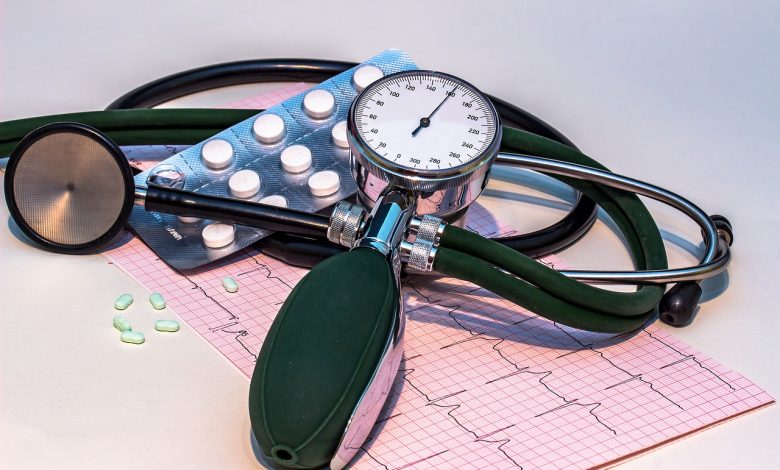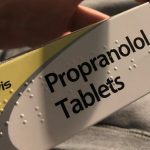What Is The First Drug Of Choice For Hypertension?

High blood pressure is a prevalent health issue worldwide. According to the World Health Organization (WHO), it is estimated that over 1.28 billion people worldwide have hypertension. In the United States, the Centers for Disease Control and Prevention (CDC) reports that about 108 million adults, or nearly half of all adults, have high blood pressure. Shockingly, only about 24% of those with hypertension have their condition adequately controlled.
High blood pressure is often referred to as a “silent killer” because it typically doesn’t cause noticeable symptoms until it reaches dangerously high levels or leads to complications. Regular blood pressure monitoring is essential for early detection and effective management.
If left untreated or poorly controlled, high blood pressure can have severe consequences. It significantly increases the risk of heart disease and stroke, which are the leading causes of death globally. According to the American Heart Association, individuals with high blood pressure are more than twice as likely to die from heart disease and three times more likely to die from stroke compared to those with normal blood pressure. Managing high blood pressure involves a combination of lifestyle modifications and, in some cases, medication.
Classes Of Antihypertensive Drugs And Their Mechanism Of Action
Antihypertensive drugs are medications specifically designed to help lower and control high blood pressure. They work by targeting different mechanisms within the body to reduce the force against the artery walls and promote the relaxation of the blood vessels.
There are several classes of antihypertensive drugs, each with its own mechanism of action. Here’s a detailed overview of the major classes of antihypertensive drugs and how they work:
1. Diuretics
• Mechanism of Action: Diuretics promote the excretion of water and salt from the body by increasing urine production. By reducing the volume of fluid in the blood vessels, diuretics help lower blood pressure.
• Types of Diuretics: Thiazide diuretics (e.g., hydrochlorothiazide), loop diuretics (e.g., furosemide), and potassium-sparing diuretics (e.g., spironolactone).
2. Angiotensin-Converting Enzyme (ACE) Inhibitors
• Mechanism of Action: ACE inhibitors block the action of the enzyme ACE, which converts angiotensin I to angiotensin II. Angiotensin II is a potent vasoconstrictor that narrows blood vessels and raises blood pressure. By inhibiting ACE, these medications reduce the production of angiotensin II, leading to vasodilation and decreased blood pressure.
• Examples: Lisinopril, enalapril, ramipril.
3. Angiotensin II Receptor Blockers (ARBs)
• Mechanism of Action: ARBs work by blocking the receptors to which angiotensin II normally binds. By doing so, they prevent the vasoconstrictive effects of angiotensin II, leading to vasodilation and lowered blood pressure.
• Examples: Losartan, valsartan, irbesartan.
4. Beta-Blockers
• Mechanism of Action: Beta-blockers block the beta-adrenergic receptors, which are usually activated by the hormone adrenaline (epinephrine). By blocking these receptors, beta-blockers reduce the effects of adrenaline on the heart, causing the heart to beat more slowly and with less force, thereby reducing blood pressure.
• Examples: Atenolol, metoprolol, propranolol.
5. Calcium Channel Blockers (CCBs)
• Mechanism of Action: CCBs inhibit the entry of calcium into smooth muscle cells of the arteries, resulting in relaxation and dilation of the blood vessels. This reduces peripheral resistance and lowers blood pressure.
• Types of CCBs: Dihydropyridine CCBs (e.g., amlodipine, nifedipine) primarily target arterial smooth muscle, while non-dihydropyridine CCBs (e.g., verapamil, diltiazem) affect both arterial smooth muscle and the heart.
6. Alpha-Blockers
• Mechanism of Action: Alpha-blockers block alpha-adrenergic receptors, leading to relaxation and dilation of blood vessels, thereby reducing resistance to blood flow and lowering blood pressure.
• Examples: Doxazosin, prazosin, terazosin.
7. Central Alpha Agonists
• Mechanism of Action: Central alpha agonists act in the brain to decrease sympathetic outflow, which reduces nerve signals that stimulate vasoconstriction and increase heart rate. This results in lowered blood pressure.
• Examples: Clonidine, methyldopa.
8. Direct Renin Inhibitors
• Mechanism of Action: Direct renin inhibitors (DRIs) block the enzyme renin, which plays a role in the production of angiotensin II. By inhibiting renin, these medications reduce the formation of angiotensin II, leading to vasodilation and decreased blood pressure.
• Example: Aliskiren.
What is the first drug of choice for hypertension?
The first-line drug of choice for hypertension can vary depending on several factors, including the patient’s age, race, comorbidities, and overall health. However, in general, the most commonly recommended initial medication classes for treating hypertension are:
1. Thiazide diuretics: These medications, such as hydrochlorothiazide, help reduce blood pressure by promoting the excretion of sodium and water from the body, leading to decreased fluid volume. Thiazide diuretics are often considered first-line treatment, especially for uncomplicated hypertension.
2. Angiotensin-Converting Enzyme (ACE) Inhibitors: ACE inhibitors, like lisinopril and enalapril, work by blocking the conversion of angiotensin I to angiotensin II, a hormone that constricts blood vessels. By reducing angiotensin II levels, ACE inhibitors relax and widen blood vessels, leading to lower blood pressure.
3. Angiotensin Receptor Blockers (ARBs): ARBs, such as losartan and valsartan, target the same pathway as ACE inhibitors but act by blocking the receptors for angiotensin II. This causes blood vessels to dilate and helps lower blood pressure.
4. Calcium Channel Blockers (CCBs): CCBs, like amlodipine and diltiazem, inhibit the entry of calcium into muscle cells of the heart and blood vessels, leading to the relaxation of arterial smooth muscles and dilation of blood vessels. This effect helps reduce blood pressure.
5. Beta-Blockers: Beta-blockers, such as metoprolol and atenolol, work by blocking the action of adrenaline and other stress hormones on the heart. They slow the heart rate and decrease the force of contraction, thereby reducing blood pressure.
How To Choose Antihypertensive Drug
The selection of an antihypertensive drug is based on several factors that need to be considered by a healthcare professional. Here are some key considerations when choosing an antihypertensive medication:
1. Blood pressure level and urgency: The severity of hypertension and the need for immediate blood pressure reduction may influence the choice of medication. In some cases, such as hypertensive emergencies, more potent and rapidly acting drugs may be required.
2. Comorbidities and other medical conditions: The presence of other medical conditions, such as diabetes, heart disease, kidney disease, or specific organ damage, can influence the choice of medication. For example, certain drugs, like ACE inhibitors or ARBs, may be preferred for patients with diabetes or chronic kidney disease due to their additional protective effects on these organs.
3. Patient characteristics: Factors such as age, race, sex, and individual patient preferences can impact medication selection. For instance, certain drug classes, like diuretics, may be more effective in older adults, while ACE inhibitors may be beneficial for patients with heart failure.
4. Contraindications and side effects: Any contraindications or potential adverse effects associated with specific medications need to be considered. Some drugs may be unsuitable for patients with certain conditions or may cause side effects that could be poorly tolerated.
5. Cost and availability: The affordability and accessibility of antihypertensive medications should also be taken into account, as it can affect long-term adherence and treatment success.
6. Individual response: Each person may respond differently to different medications, so monitoring the patient’s response to treatment is crucial. Regular blood pressure measurements and follow-up appointments can help assess the effectiveness of the chosen drug and make adjustments if necessary.
Ultimately, the decision regarding which antihypertensive drug to prescribe is complex and should be made by a healthcare professional based on a thorough evaluation of the patient’s medical history, overall health, and individual needs. Regular monitoring and communication between the patient and healthcare provider are essential to ensure optimal blood pressure control and management of hypertension.
Can antihypertensive drugs cause hypotension?
Yes, antihypertensive drugs have the potential to cause hypotension, which is low blood pressure. While the primary goal of these medications is to lower blood pressure, excessive or rapid reduction can result in hypotension. Hypotension may lead to symptoms such as dizziness, lightheadedness, fainting, blurred vision, or fatigue.
The risk of hypotension is particularly relevant when initiating or adjusting the dosage of antihypertensive medications. It can occur if blood pressure is reduced too much or if the medication interacts with other drugs the person is taking. Additionally, certain individuals, such as the elderly or those with pre-existing low blood pressure, may be more susceptible to developing hypotension.
To minimize the risk of hypotension, healthcare professionals typically start with lower doses of antihypertensive medications and gradually titrate them upward while monitoring the patient’s blood pressure response. Regular blood pressure monitoring and follow-up visits are important to ensure the medication is appropriately managing hypertension without causing hypotension.
If hypotension occurs, adjustments to the dosage or type of medication may be necessary. In some cases, combining antihypertensive drugs from different classes can help achieve better blood pressure control with lower individual doses, reducing the risk of hypotension.
It’s important to note that the management of hypertension and the choice of antihypertensive drugs should be individualized and monitored by a healthcare professional to find the most suitable treatment approach for each patient while minimizing potential side effects like hypotension.





